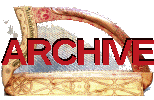

|

We don’t know when, or where, the harp was made.
This harp has a complex series of legendary histories associated with it. Its name, the ‘Brian Boru’ harp, comes from the traditional claim that it belonged to the High King of all Ireland, Brian Boru (Brian Bóroimhe, 941-1014).
According to the legendary accounts1, the harp originally belonged to King Brian Boru. After his death, in 1014, he was succeded by his son Teigue (Tadc). Tadc in turn was succeeded in 1023 by Brian’s other son, Donough (Donnchad mac Briain). Donnchadh in turn was deposed by Tadc’s son in 1063. Donnchadh then left Ireland on a pilgrimage to Rome, carrying with him his father Brian’s regalia, including the crown and the harp. He presented this regalia to the Pope, and died in Rome the next year, 1064.
The regalia is supposed to have stayed in the Vatican for some centuries, until at last the harp was presented by the Pope to the English king (the Vatican is supposed to have kept hold of the crown). One source says it was given by Pope Leo X to king Henry VIII in 1520, when granting him the title ‘Defender of the Faith’. Another source says it was Pope Innocent XI who gave it to Charles II in 1678.
Whichever king it was, he did not keep hold of the harp in London, but gave it to the Earl of Clanricarde. (One source says Clanrickarde was meant to pass it on to the Earl of Thomond, but never did). Either way, the harp remained with the Clanrickarde family until the early 18th century, when it passed into the family of MacMahon, of Clenagh, co. Clare. In about 1756, MacMahon bequeathed it to Commissioner Macnamara of Limerick. In the 1770s, Macnamara bequeathed it to Ralph Ousley of Limerick. In 1781-2, Ousley presented it to the Rt. Hon. William Burton Conyngham. In 1782, Conyngham deposited it in Trinity College Dublin where it remains to this day.
If we believe this complex narrative, then the harp must date back to the early 11th century if not before. However, as soon as the story was first published, scholars have been sceptical of the truth of the story2.
The usual dates suggested for the harp ranges from the 14th to the 16th century. Some scholars have compared it with the Queen Mary harp, the Keills cross slab and other West Highland artwork, and have suggested that it may have been made in South Argyll in the 15th century3. However, the method used for such judgements is comparative study of the artwork and decoration, and the decoration of this harp is very under-studied (see the decoration page).

The harp is a composite object, in that it is not preserved today in the same state as when it was first made. It is however not clear what changes and additions or alterations have been made over the centuries. At the very least, there have been repairs to damage and cracks on the pillar and soundboard, as well as the decay of the base. The gems and their silver fittings seem to be secondary additions, obscuring or destroying earlier decoration beneath them. And many scholars suggest that the decoration itself is in many layers, with the harp being re-decorated in newer artistic styles. Finally, some people have suggested that the three main components (neck, pillar, soundbox) are not all of the same age or provenance.
From the 1790s we do at least have some evidence of changes that have been made to the harp. For more details of these, see the Damage page.
1. I know of two primary sources for the story. The better known is Charles Vallancey, Collecteana Rebus Hibernicis, Dublin, 1786, p.32-3. The other version is Ralph Ousely, letter, 1783: manuscript copy by W. Hardiman, 1820. Bl ms Egerton 74, f184, transcribed on my Texts page. ^
2. Walker 1786, Bunting 1840, O’Curry 1873 etc. ^
3. Keith Sanger & Alison Kinnaird, Tree of Strings (Crann nan Teud), Kinmor, Temple, 1992 ^
Simon Chadwick